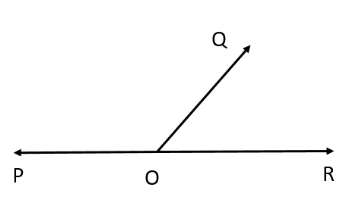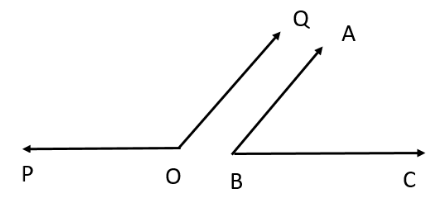
What is the difference between supplementary angle and linear pair?
Answer
498.9k+ views
Hint:There are different ways angles can be identified and calculated depending upon the geometry. The properties for parallel lines, line crossing parallel lines, common arm between angles or different angles drawn separately can be presented. There are types of angles and supplementary angle and linear pair are two of them. They may differ on some algebraic properties and in geometric representation.
Complete answer:
There are types of angles and supplementary angle and linear pair are two of them. They may differ on some algebraic properties and in geometric representation. The linear pair has a sum of angles as $ {180^ \circ }$ and there exists a common arm between them.
LINEAR PAIR:

The angles x and y are linear pairs as they lie on a straight line. there exists a common arm in between the two angles.
SUPPLEMENTARY ANGLES: The supplementary angle has a sum of angles as $ {180^ \circ }$ and there is no existence of a common arm between them.

The angle POQ and angle ABC are known as supplementary angles as they dont share a common arm. Supplementary angles can be placed so they form a linear pair (straight line), or they may be two separate angles. Linear pair can be said to be a pair of two supplementary angles. But two supplementary angles might or might not form a linear pair.They just have to "supplement" each other, that is their sum should be $ {180^ \circ }$.
Note:There are four linear pairs formed by two intersecting lines. Each pair form supplementary angles because their sum is $ {180^ \circ }$. There can exist two angles that add up to $ {180^ \circ }$ , but that cannot form a linear pair. For example, two different angles in a parallelogram that are sharing a common side.
Complete answer:
There are types of angles and supplementary angle and linear pair are two of them. They may differ on some algebraic properties and in geometric representation. The linear pair has a sum of angles as $ {180^ \circ }$ and there exists a common arm between them.
LINEAR PAIR:

The angles x and y are linear pairs as they lie on a straight line. there exists a common arm in between the two angles.
SUPPLEMENTARY ANGLES: The supplementary angle has a sum of angles as $ {180^ \circ }$ and there is no existence of a common arm between them.

The angle POQ and angle ABC are known as supplementary angles as they dont share a common arm. Supplementary angles can be placed so they form a linear pair (straight line), or they may be two separate angles. Linear pair can be said to be a pair of two supplementary angles. But two supplementary angles might or might not form a linear pair.They just have to "supplement" each other, that is their sum should be $ {180^ \circ }$.
Note:There are four linear pairs formed by two intersecting lines. Each pair form supplementary angles because their sum is $ {180^ \circ }$. There can exist two angles that add up to $ {180^ \circ }$ , but that cannot form a linear pair. For example, two different angles in a parallelogram that are sharing a common side.
Recently Updated Pages
Master Class 9 Social Science: Engaging Questions & Answers for Success

Master Class 9 Science: Engaging Questions & Answers for Success

Master Class 9 English: Engaging Questions & Answers for Success

Master Class 9 Maths: Engaging Questions & Answers for Success

Master Class 11 Economics: Engaging Questions & Answers for Success

Master Class 11 English: Engaging Questions & Answers for Success

Trending doubts
What is the Full Form of ISI and RAW

Golden Revolution is related to AFood production BOil class 9 social science CBSE

Which is the longest day and the shortest night in class 9 social science CBSE

Which are the Top 10 Largest States of India?

Why did Aurangzeb ban the playing of the pungi Answer class 9 english CBSE

Distinguish between the following Ferrous and nonferrous class 9 social science CBSE




